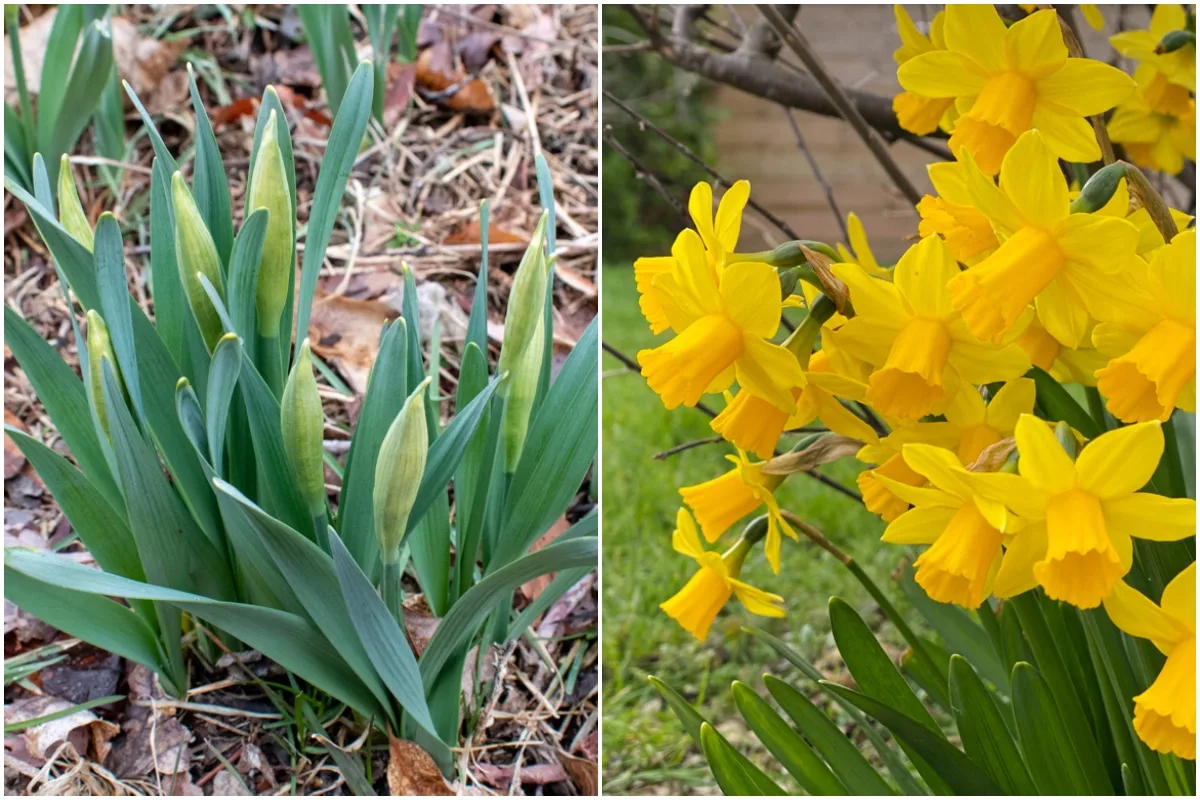
When you think of spring flowers, I’ll bet daffodils immediately come to mind.
It’s no surprise. With their pop of bright yellow after a dreary winter, they’re the perfect mascot for the season of new beginnings. Even when they show up amid a blanket of snow, it’s as if they’re nodding their yellow heads, saying, “Yup, warm weather is on the way.”
If you grow daffodils or are thinking of growing them, there are a few things you should know to keep them blooming for decades.
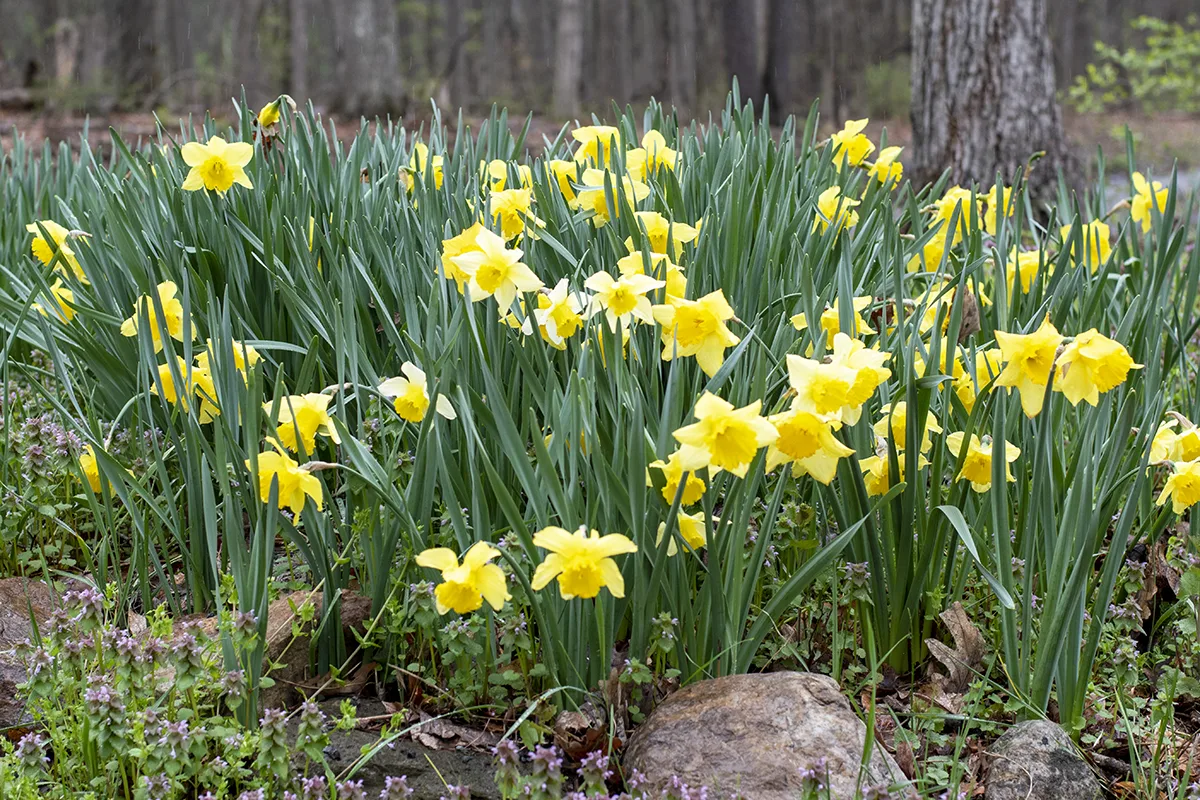
Daffodils Certainly Don’t Live Up to Their Name
If you remember your Greek mythology, Narcissus was a pretty fine-looking hunter. We’re talking smokin’ hot. But he only had eyes for himself. The vain lad fell in love with his reflection, wasting his life away staring at himself in a pool of water. You know he would have been the king of selfies if he had a social media account. When he finally kicked the bucket, a single narcissus flower bloomed in his place.
Lucky for us, daffodils, or narcissus, aren’t nearly as vain and fussy as their namesake. In fact, they’re quite easy to grow.
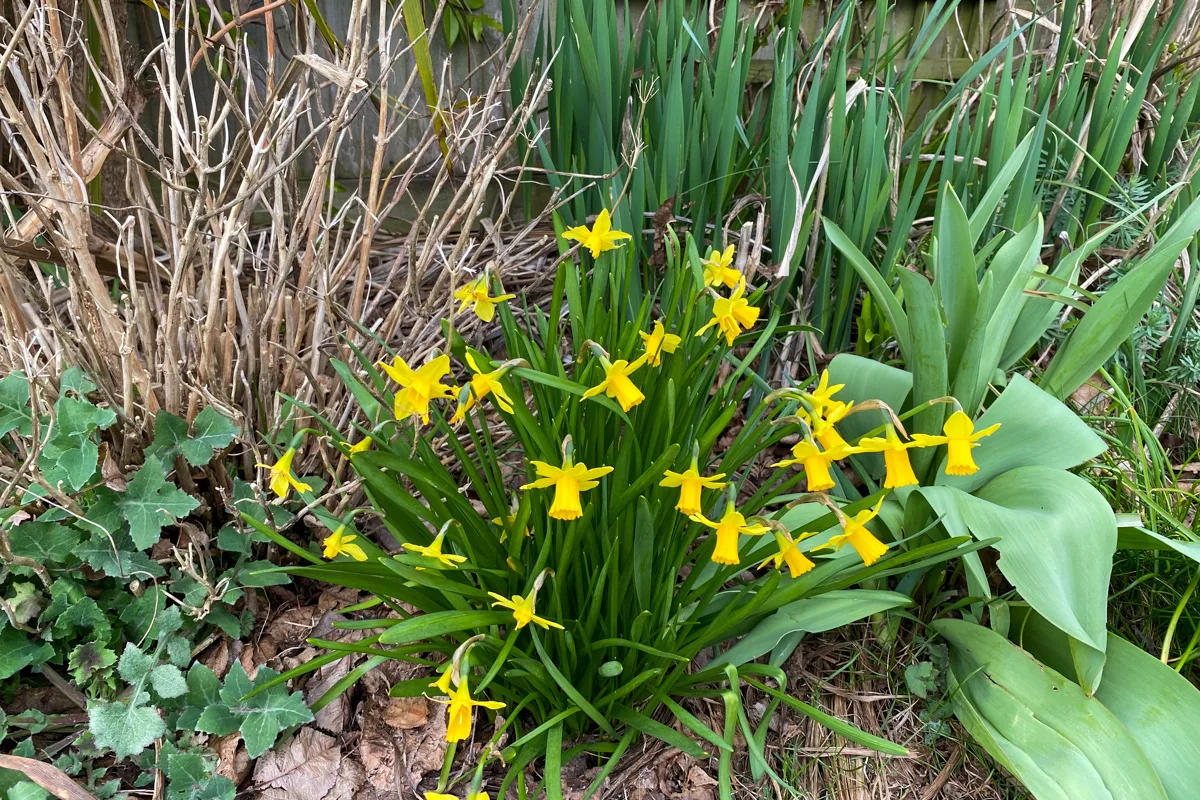
The narcissus species is native to Southern Europe (mostly Spain and Portugal) and parts of North Africa. Over the millennia, these beautiful bulbs naturalized, creeping further into Europe. The daffodil spread to distant lands brought by European colonizers and eventually made their way to the United States via the first settlers. But their popularity took off thanks to the breeding efforts of the Netherlands.
Daffodils are perennial flowers that grow from a bulb. By collecting and storing nutrients in the bulb after they bloom (mostly carbohydrates), they winter over and bloom again the next year. Plants that store nutrients and bloom this way are called bulbiferous geophytes. How’s that for a mouthful?
“Say, Paul, how are your bulbiferous geophytes coming along this year?”
Some other common bulbiferous geophytes you’re probably familiar with are tulips and amaryllis.
While daffodils are pretty common, a few things about them may surprise you and help you keep yours looking great for years to come.
1. For Best Results, Skip the Fertilizer
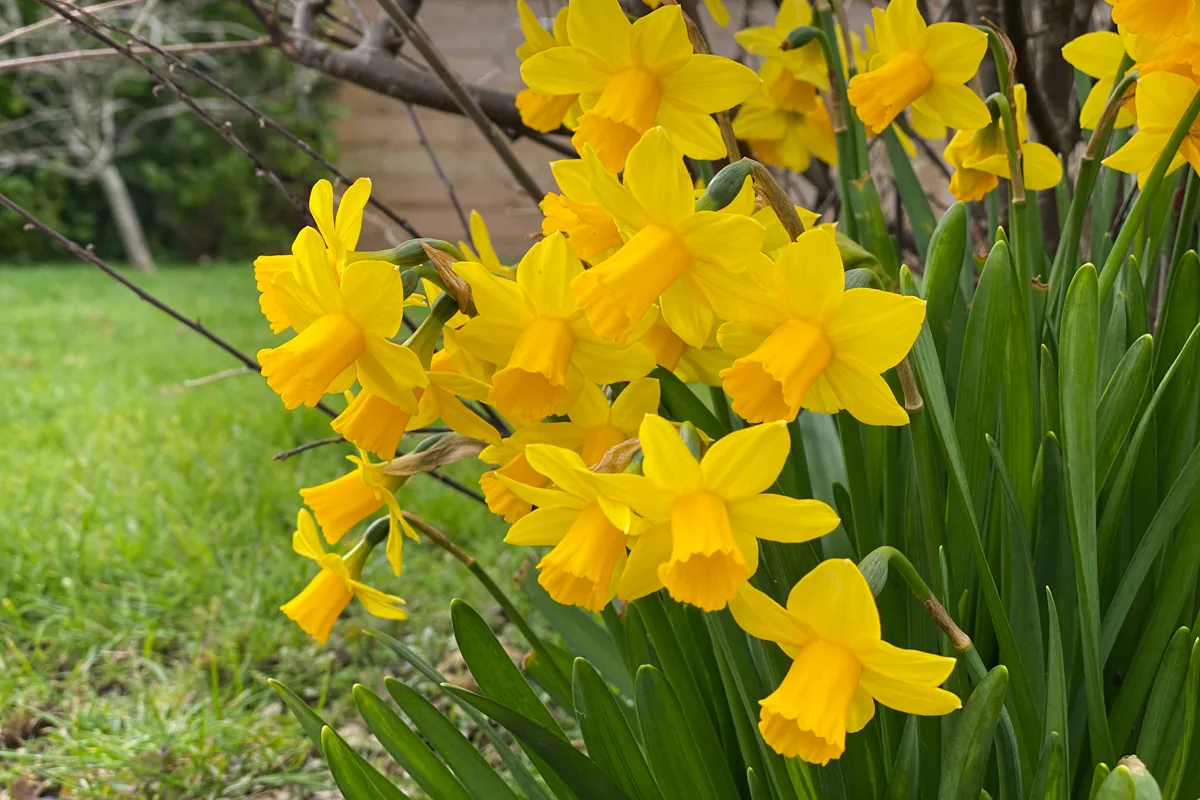
Yup, I said it. Daffodils rarely need to be fertilized. Because they’re one of the first flowers (let alone plants) to show up on the scene each spring, they rarely have to compete with other plants for nutrients. They have access to all the nutrients accumulated over the winter while the soil was at rest.
So often, we apply fertilizer without having a clue as to whether or not it’s needed. Most often, it’s not. If you’re concerned about the nutrient content of your soil, perform a soil test first.
In general, as long as your daffodils don’t come up blind, they’re doing just fine.
2. Did You Know Daffodils Can Be Blind?
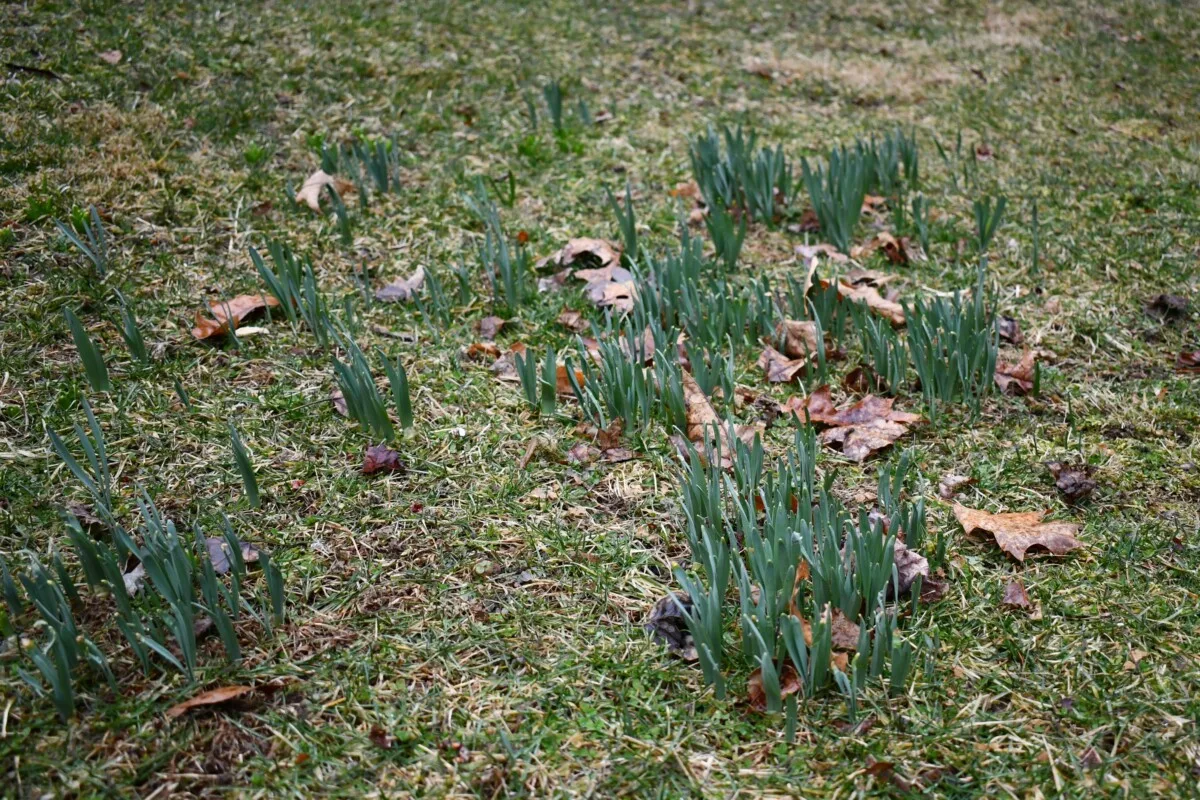
When daffodils pop up with plenty of healthy foliage, but no buds, they’re referred to as ‘blind.’ (This is true for all flowering bulbs.) There are numerous reasons why a bulbiferous geophyte (Come on, it’s too fun not to say more than once.) may not have blooms.
If it’s the first spring after planting new bulbs, it’s likely they weren’t planted deep enough or at the wrong time.
In either case, the best thing to do is wait until next year. The plant’s blooming cycle will adjust, and the bulbs will eventually reach the correct planting depth on their own. (More on that later.)
Older daffodils that emerge blind can be caused by a lack of nutrients due to poor soil or having their leaves cut too early.
This is easily remedied by following #4. If you suspect poor soil instead, perform a soil test, and fertilize if needed. Bone meal is an excellent slow-release fertilizer for all your flowering bulbs. A good application of compost on top of bone meal is always a good idea too.
If none of these is the problem, the bulbs likely succumbed to pests or disease.
It’s best to dig them up and replace them with healthy bulbs.
3. Daffodils Can Crawl Through the Soil. Seriously.
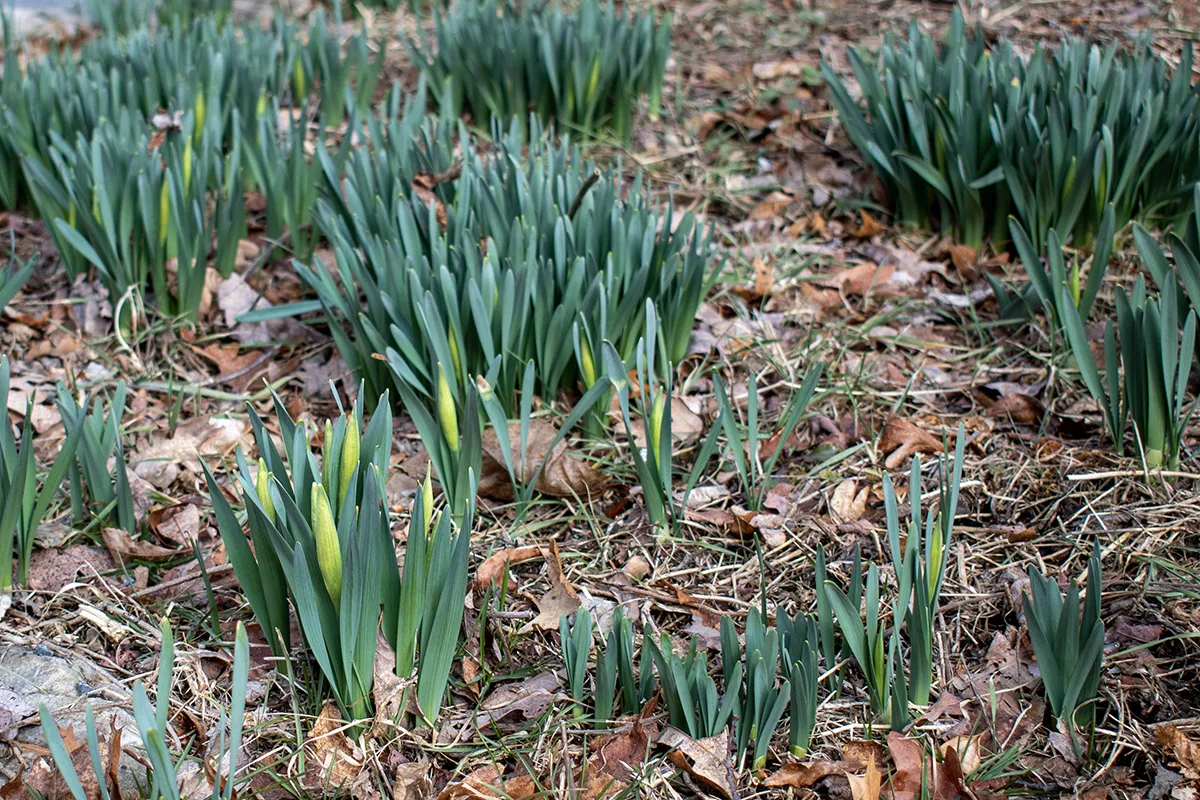
Unlike seeds, bulbs need to be planted in the right direction. We’ve all been told to plant spring bulbs with the roots facing downward, so the emerging plant can grow straight up. But occasionally, you’ll get a batch of bulbs with a few that are difficult to surmise which end is what.
In these cases, split the difference and plant the bulb sideways.
Daffodils can adjust their position in the soil. They have something in common with tomatoes that allows them to do this.
Daffodils and tomatoes both have the ability to grow extra roots known as adventitious roots. Adventitious roots grow separately from the main tap root. They have different functions or, as the name implies, advantages. Some tropical plants use theirs to climb and cling to trees. While tomatoes use theirs for improved water and nutrient uptake. The adventitious roots daffodils grow are called contractile roots, and they’re used to move around in the soil.
That’s right; your daffodils are out there crawling around in the soil.
Kind of creepy, right?
Contractile roots slowly push or pull against the soil, moving their position in the soil. These roots can move the bulb deeper into the soil during periods of deep cold or push the bulb up if it’s buried too deeply. They can even (eventually) right a bulb planted sideways.
4. Keep Them Growing Once They Have Bloomed
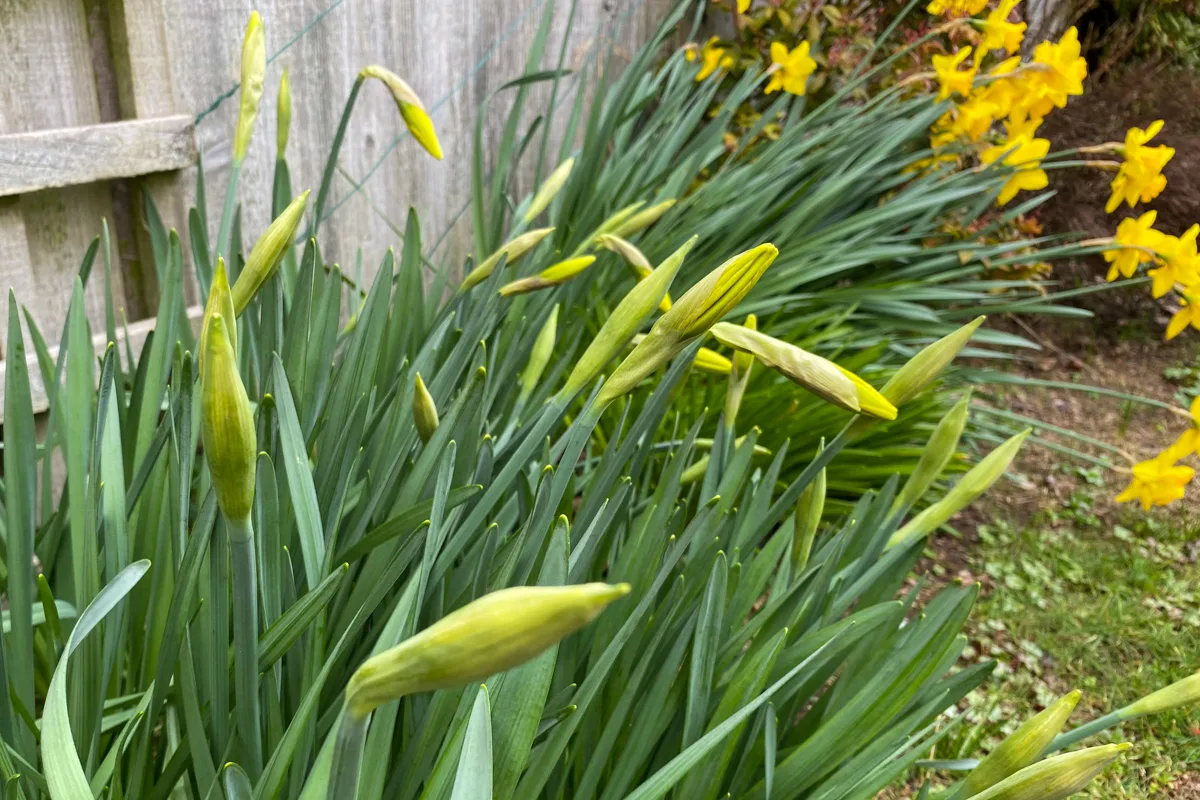
It may be tempting to mow over daffodils once the blooms have faded. Especially if the weather has warmed up and you have a lawn warrior in your household. But have them hold off on cropping this spring’s growth.
Remember, we’re dealing with bulbiferous geophytes. They need to store nutrients for the next year.
The leaves continue to grow and photosynthesize energy for the plant long after the blooms are gone. Think of the foliage after the flowers as green solar panels for the bulb underground.
For the best results, deadhead blossoms once they begin to fade and let the leaves continue to grow. They will die back naturally within 4-6 weeks. Once the leaves yellow and dry out, mow them or cut them back.
If you have an over-eager lawn mower in your home, it helps to mark the clumps of daffodils in the mowing path with brightly colored flag markers.
5. Every Part of the Plant is Poisonous
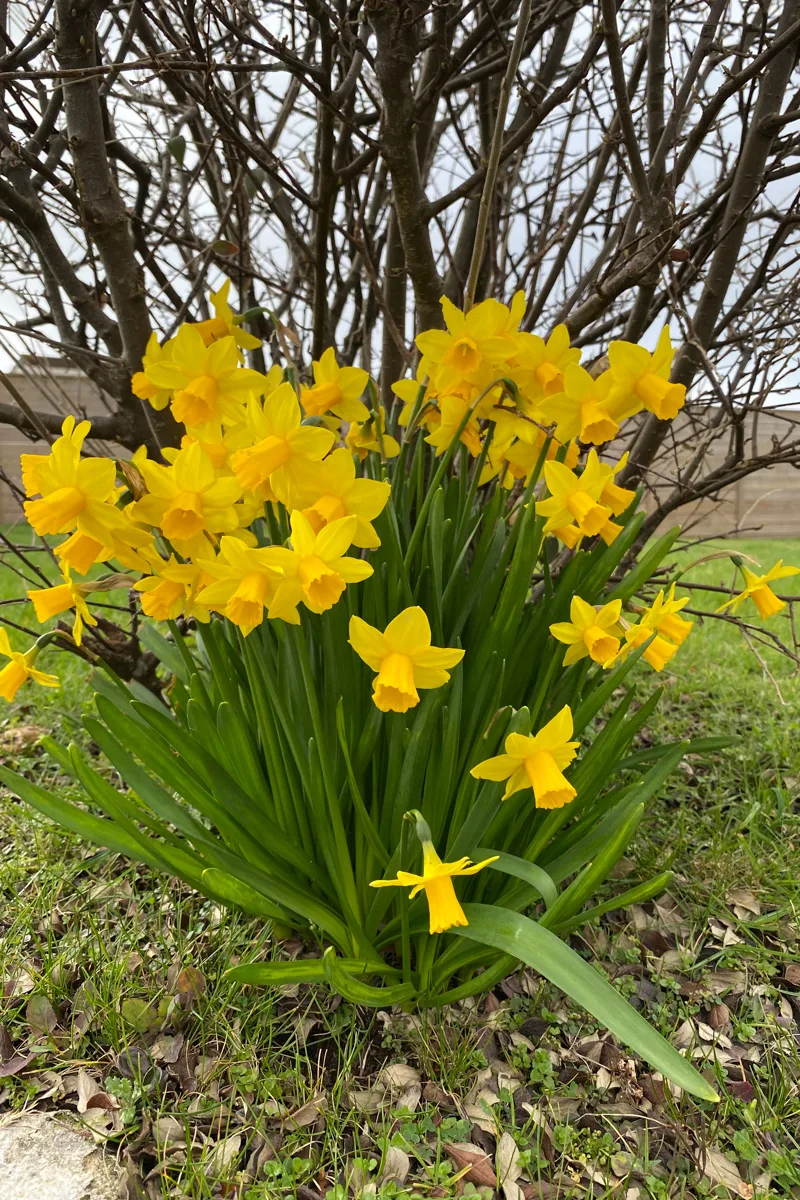
Daffodils are toxic, the whole plant. They contain a naturally occurring alkaloid – lycorine. If ingested, you’ll experience nausea, diarrhea and intense abdominal discomfort. In high enough quantities, it can be deadly. Although it’s unlikely you would make it past one bite, as lycorine has a crystalline chemical structure, so it’s a bit like eating crushed glass. Not exactly appetizing.
The most common occurrence of lycorine poisoning is from inexperienced foragers mistaking daffodils for wild onions or leeks.
Because of their toxicity, pet owners should be careful where they plant daffodils. Luckily, most animals somehow know daffodils aren’t to be messed with and avoid them. This means daffodils are great if you have wild nibbling critters that like to eat your flowers, as they will leave them alone. You can even plant them around other plants you want to protect.
6. Most Daffodils Are Useless to Pollinators – Are Yours?
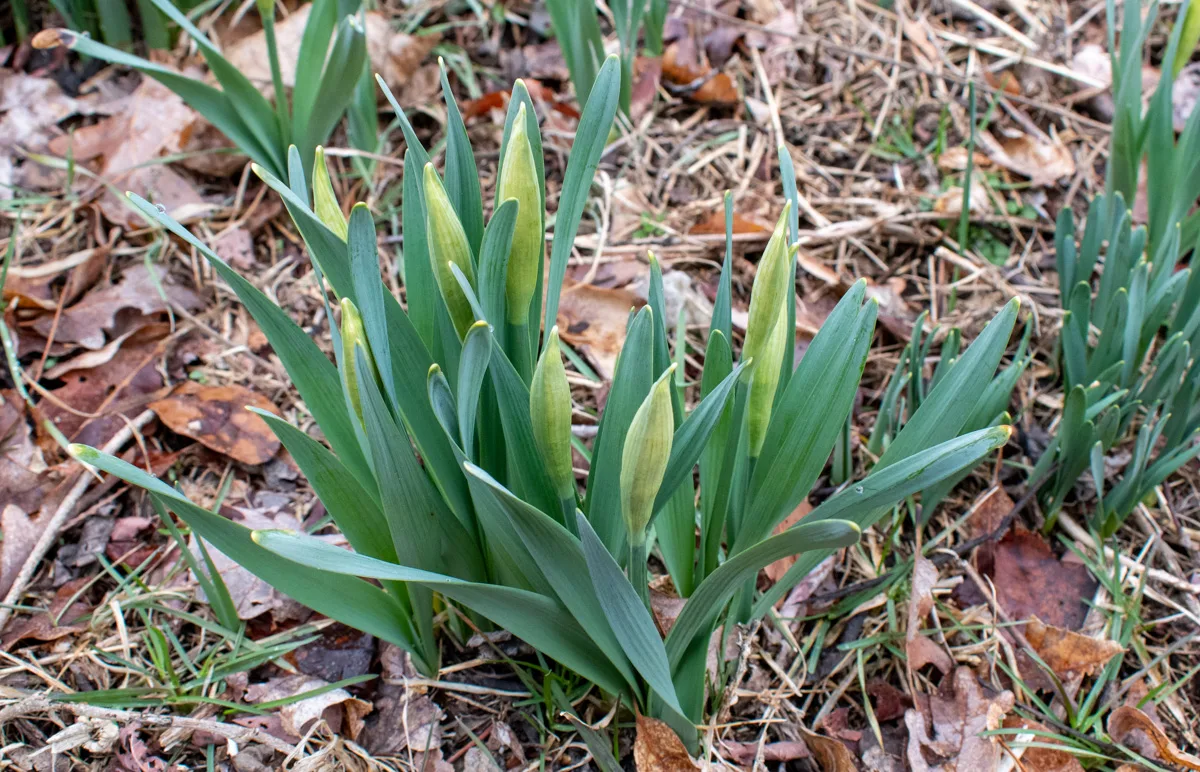
Because daffodils are some of the first blooms of spring, you would be correct to assume they play an important role in feeding hungry pollinators emerging from dormancy. Naturally, you see countless gardening articles advocating the planting of spring bulbs to help out starved bees in the spring.
The problem is many of the bulbs available today are completely useless to pollinators.
That advice needs to come with a massive caveat.
Plants have adapted over the eons to attract pollinators. It’s a win-win for both.
Things like color play an important role. Bees don’t see color like we do, but they can easily spot blue, yellow and white. Look at all the blooms next spring, and you’ll notice these colors everywhere. Flower shapes have evolved to make pollination easier. That characteristic cup in the center of a daffodil attracts specific long-tongued moths and bees who have to climb into the cramped cup for a bite, thus ensuring the stigma is well coated with pollen. Even the scent of daffodils is a natural beacon to bees who rely on smell to find food.
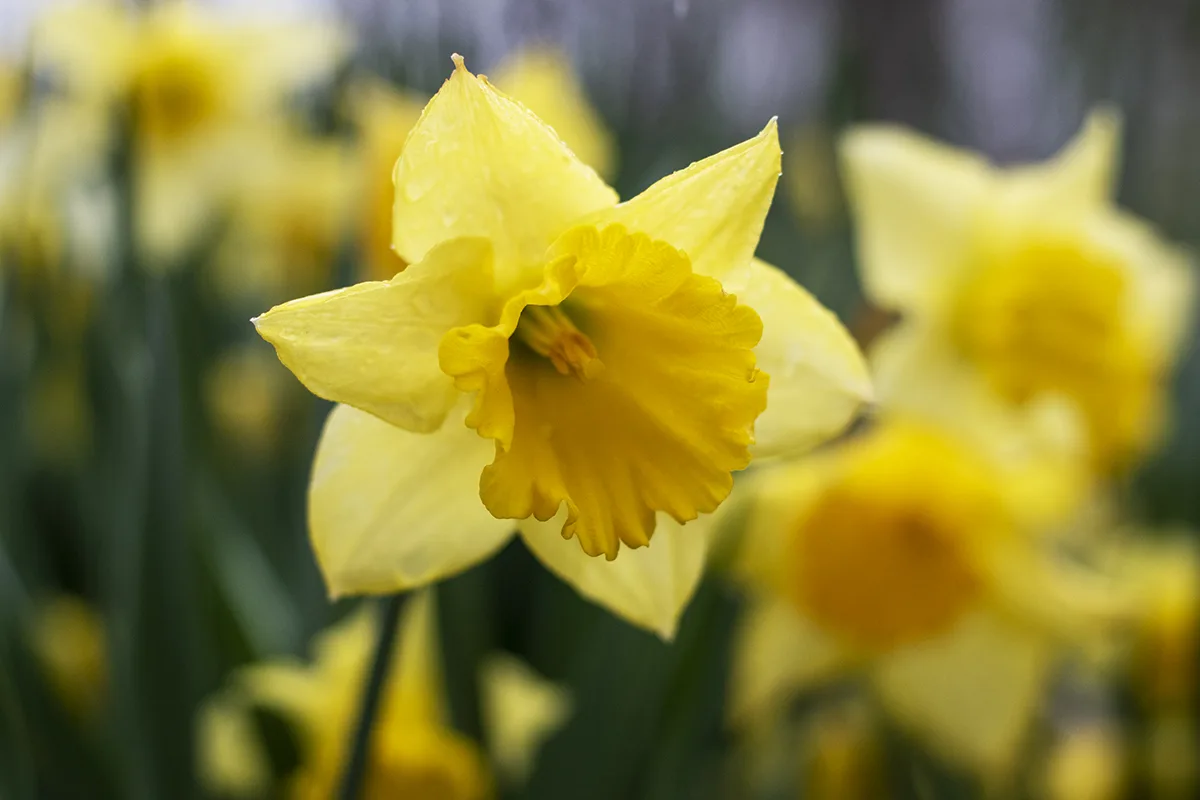
But these traits only apply to non-hybridized daffodil species.
Over the years, we’ve bred daffodils to have extra petals, different cup shapes, be resistant to disease, or have larger or smaller blooms. After decades of hybridization, most daffodils (tulips, too) have little or no pollen. Some are even sterile, creating no pollen. Others have petal shapes or extra petals, which can interfere with the bee accessing the pollen.
While these blooms may appeal to us, they’re useless to the pollinators that need them the most.
If you want to ensure you have a pollinator-friendly garden, opt for unhybridized daffodil species (look for ones that still have their Latin names).
7. For a Carpet of Yellow, Choose a Species for Naturalizing
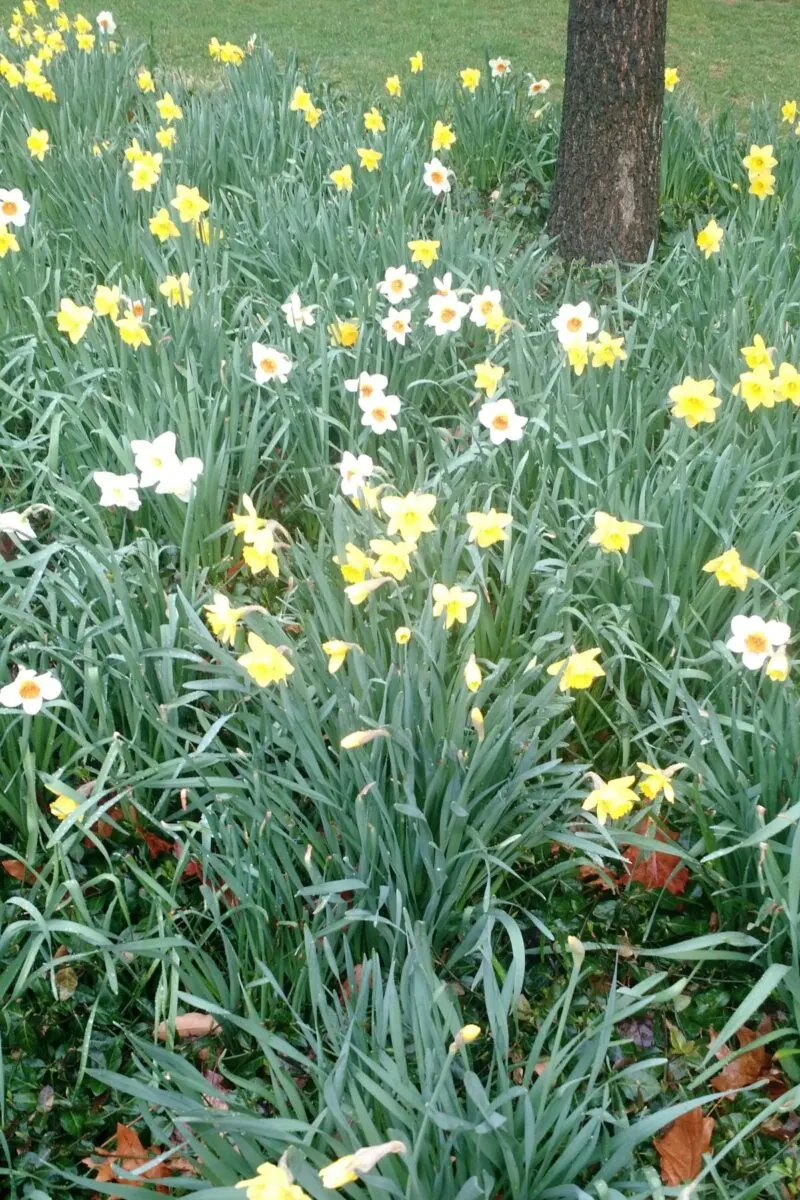
Sure, daffodils look pretty all lined up neatly along the garden fence, but who doesn’t love a lawn festooned with bright dots of yellow all willy-nilly, here and there? Because of their carefree nature and tendency to spread and reproduce, daffodils are a great choice for naturalizing – letting them spread naturally over an area.
However, for the best results, opt for non-hybridized cultivars. If you want flowers that will last for decades (over 50 years!) and continuously spread throughout the soil, choose non-hybridized varieties or varieties noted as suitable for naturalizing.
My colleague, Mickey Gast, has a brilliant article on naturalizing bulbs in your lawn here.
8. Daffodils Can Fade Flowers Quicker in Bouquets
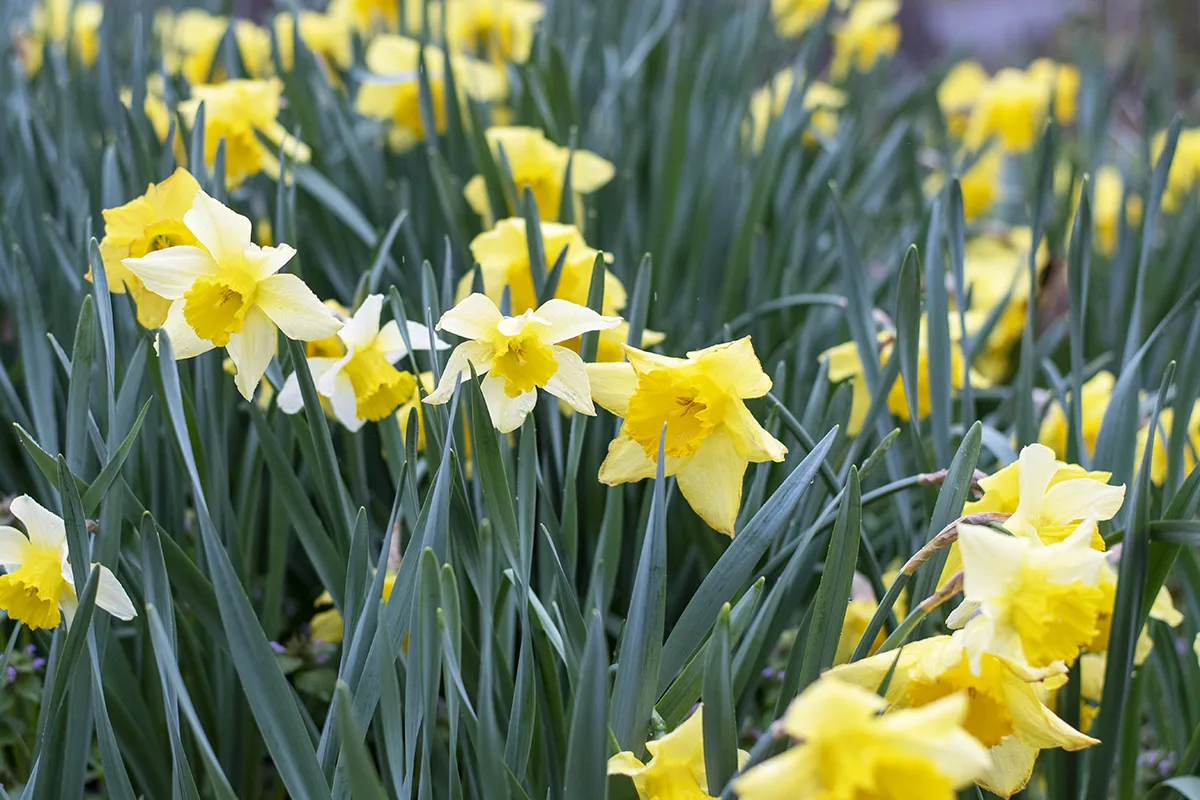
Daffodils make for a lovely display of cut flowers. It’s impossible to have a vase full of these cheery blooms and not smile each time you see them. However, they don’t mix well with other flowers in arrangements.
When you cut a daffodil stem, it releases a latex that causes other flowers sharing the same water to fade faster. If you want a mixed bouquet that includes daffodils, put them in a separate vase after you cut them, and let them sit for 24 hours. By that time, most of the latex has been released, and you can safely put them in an arrangement with other flowers.
9. The Best Bulb for Beginners
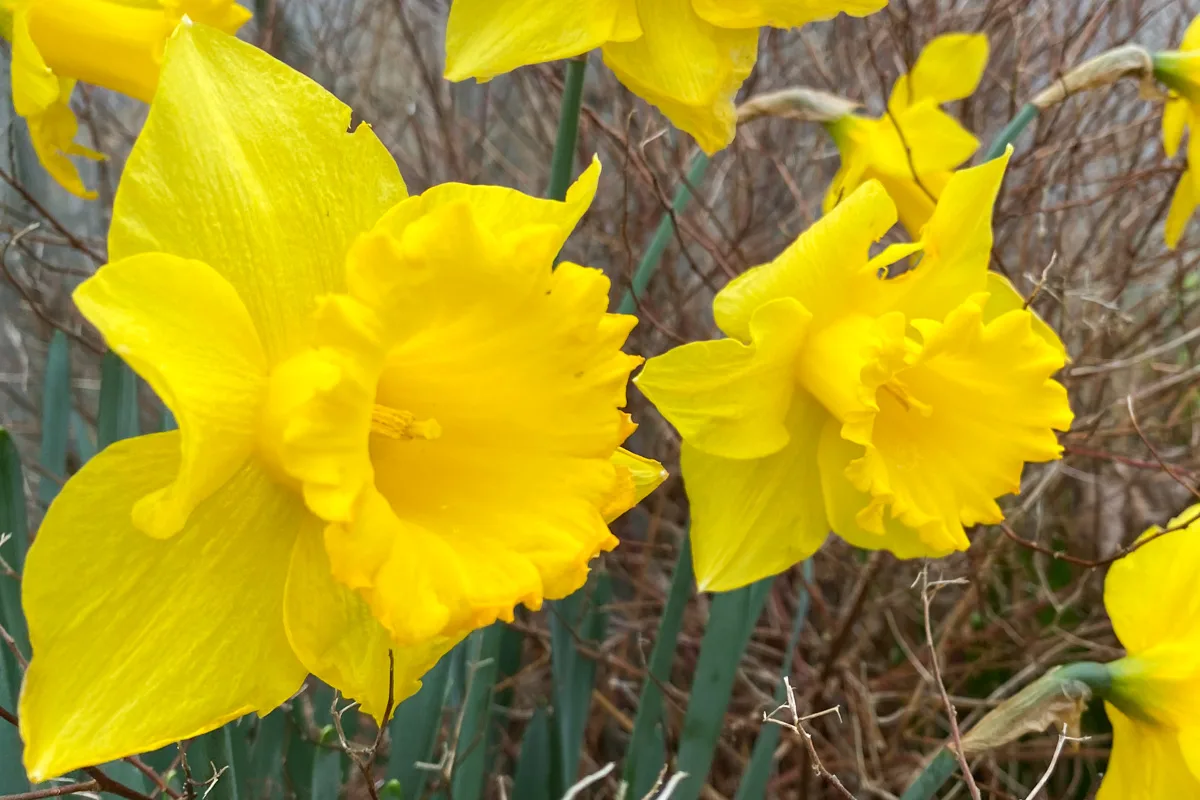
If you’re new to planting bulbs, start with daffodils. Seriously. They’re hands down the easiest bulb to grow. They take care of themselves, stand up to cold winters, don’t need fussy fertilizers, will grow in full sun or shade, and you don’t have to dig them up and split them once planted. They take care of themselves.
Because they show up so early in the season, you rarely have to worry about pests. We’ve already talked about their toxicity, which means you don’t have to worry about critters eating your flowers. And you can grow them practically anywhere.
You would be hard-pressed to find a better bulb for the neophyte bulb gardener.

Get the famous Rural Sprout newsletter delivered to your inbox.
Including Sunday musings from our editor, Tracey, as well as “What’s Up Wednesday” our roundup of what’s in season and new article updates and alerts.

